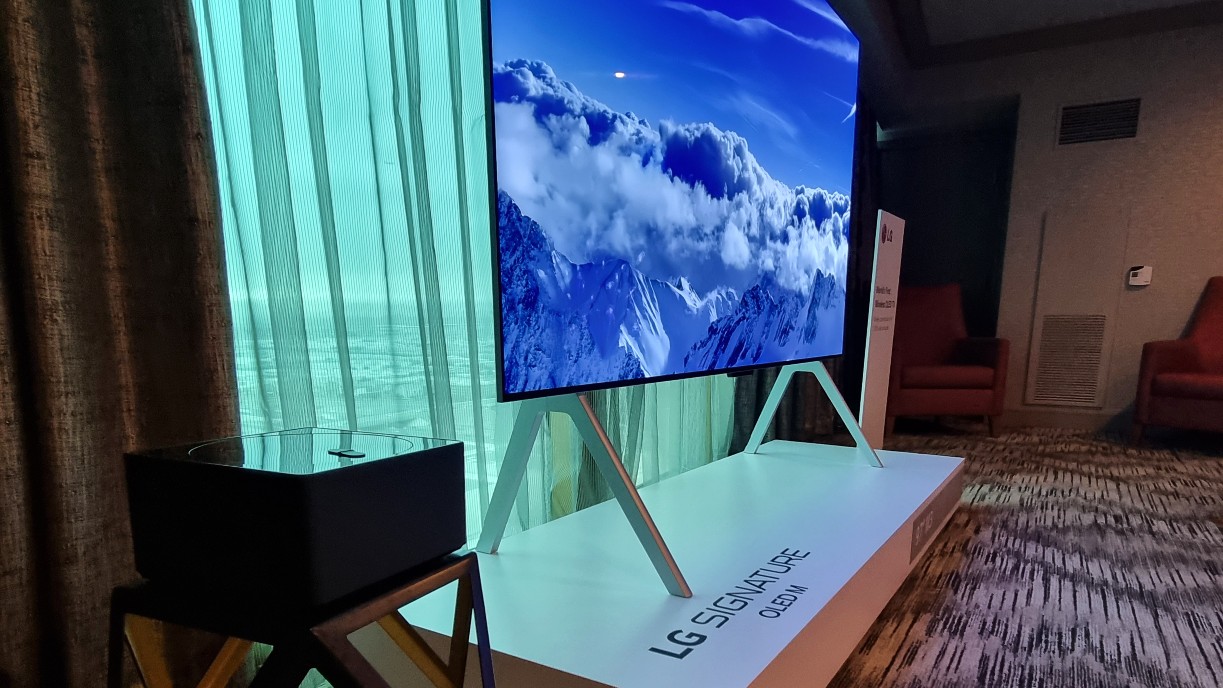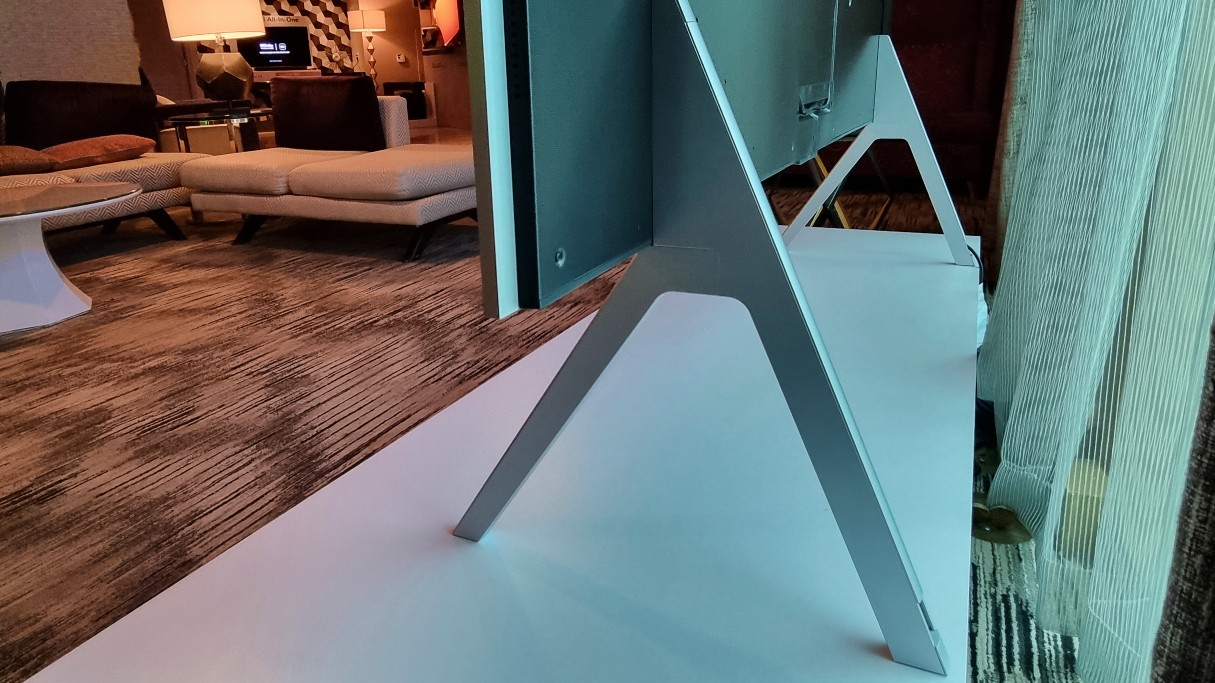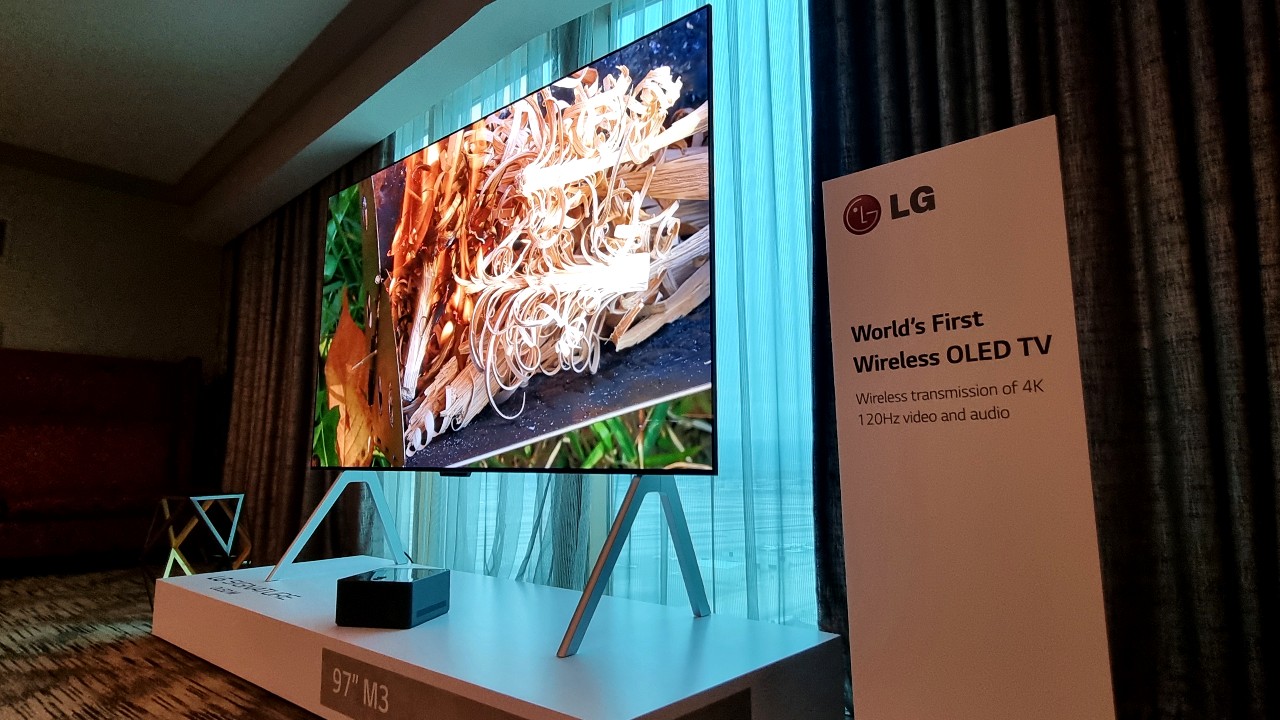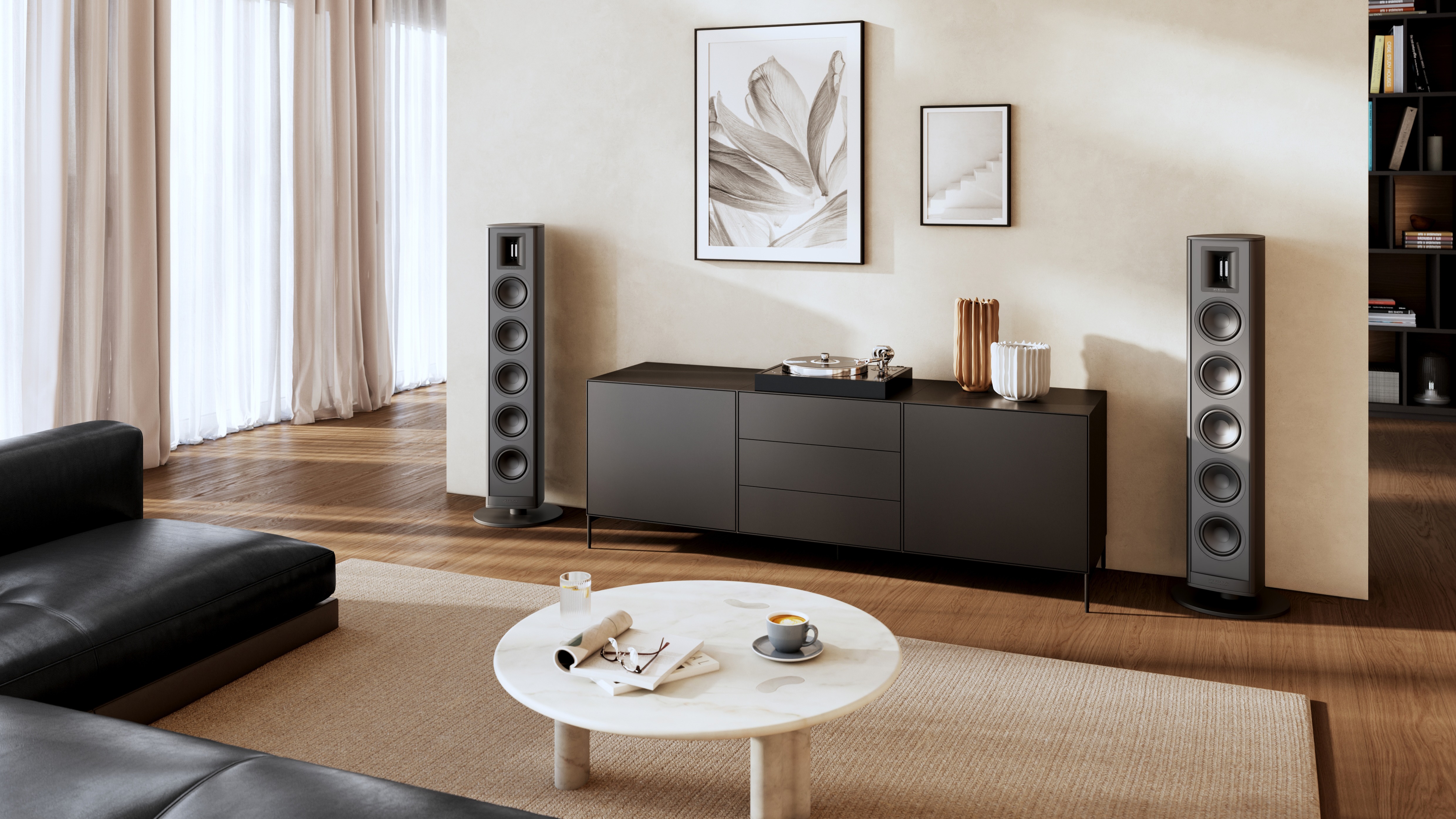Early Verdict
LG's latest eyebrow-raising OLED TV is almost entirely wireless, majoring on convenience and aesthetic
Pros
- +
Clever wireless transmission technology
- +
4K/120hz content support
- +
Innovative design
Cons
- -
No fourth HDMI input
- -
Requires power cable
- -
Inaccessibly priced for most
Why you can trust What Hi-Fi?
Rollable TVs, transparent TVs, extraordinarily slim TVs, OLED TV tunnels… you can always count on LG to bless the annual CES show with a crazy or innovative (sometimes both) TV. So, what is the company raising eyebrows with this week at CES 2023? Well, a wireless TV.
The M3 (or ‘Signature OLED M’, to use its full name) isn’t the only ‘wireless TV’ at CES 2023, with US startup company Displace here showing off its portable, battery-powered 55-inch 4K OLED TV. But the LG M3 isn’t ‘wireless’ in the sense that it is battery-powered or indeed portable; it does actually require a mains power plug. But it heeds the wireless concept by receiving all of its content wirelessly from an accompanying wireless transmitter box. And guess what, the M3 isn’t just a prototype that we may never see again – it's a genuine, fully-realised TV that should be in the homes of the fortunate folk who want and can afford it by the second half of 2023.
At CES, we were fortunate to be given a demonstration of the 97-inch LG M3 OLED TV (it will also come in 77-inch and 83-inch sizes), and while it may be some years before such a telly becomes a viable option for most of us, the convenience its design offers will no doubt be desired for years to come.

Zero Connect wireless technology
LG is calling its proprietary wireless technology ‘Zero Connect’. For now the company is being magician-like in holding back some secrets behind it, but essentially it’s a sort-of RF technology that allows the transmission of audio-video content up to 4K/120Hz between the TV screen and the supplied, separate Zero Connect box that sources (such as games consoles or Blu-ray players) can be plugged into.
The idea is that you can have the M3 TV as a centrepiece in a living space without it being cluttered by cables and nearby electronics – the accompanying transmitter box (which holds all of the M3’s circuitry) can simply be tucked somewhere out of sight.
While we would love to know the nitty-gritty details of the Zero Connect technology, such as what bandwidth it operates over, LG assures us it has been designed so that other devices sharing a room with it won’t interfere with the TV's wireless transmission.
In fact, this magic box of LG’s appears to be pretty well conceived. While LG recommends the cake box-sized chassis be placed within 30 feet/9m of the screen in a clear line of sight, an 180-degree spinner on top of the box acts as a kind of antennae that can be pointed towards the TV for a stronger wireless signal, offering flexibility over the box’s location in a room.
The latest hi-fi, home cinema and tech news, reviews, buying advice and deals, direct to your inbox.
LG says the antennae continuously sends out signals algorithmically, automatically switching to a better wireless transmission ‘path’ if it finds one and minimising disruption if, say, a person or pet walks between it and the display. And if you, like us, are wondering about lag (we're looking at you, gamers), LG claims the technology is stable and three times faster than Wi-Fi 6.

Design
Without being weighed down with brains and connections, the LG M3 itself is a relatively simple, minimalist affair – as it is, of course, intended to be. The design is clean and uncluttered: a relatively thin framed screen on a two-legged easel stand, with the power cable able to inconspicuously run down and out of one of the legs. Unsurprisingly, the screen also has an integrated wall-mount bracket so it can sit flush against a wall if you so wish.
The box is, contrastingly, inconspicuous in its design – black and boxy with nothing in the way of embellishments. Like stunt doubles, while its job is crucial, ultimately it’s designed to go unnoticed. At its rear are three 4K/120Hz-supporting HDMI 2.1 inputs that support the gaming compatibility you’d expect (VRR, Nvidia G-Sync and AMD Freesync certification, for example) as well as two USB sockets, an Ethernet port, a TV antenna coaxial, a 3.5mm audio input and of course a hole for the mains plug. There’s also an optical output, though LG suggested that the M3’s box will be able to wirelessly stream audio to a compatible soundbar.
The Zero Connect box is voice recognition-enabled, too, allowing easy hands-free control as an alternative means to the (sufficient) remote.

Picture
The M3 shares some of the DNA of this year’s just-announced LG G3, which headlines the company’s ‘standard’ 4K OLED TV lineup and looks good to offer a decent step up over last year's models.
This wireless TV boasts a 4K OLED panel and Alpha 9 processor, is 75 per cent brighter than the entry-level B3 OLED in its 77-inch size (or 30 per cent in its 83-inch and 97-inch sizes), and has generous support for HDR formats (including Dolby Vision), Dolby Atmos and all the latest gaming features. LG isn’t revealing full specs at this stage, but there’s no doubt in our minds that the M3 is a serious bit of television.
The overriding focus of our demo was to witness the wireless transmission quality, which was achieved by playing video clips (such as a scene from Mad Max: Fury Road) from a demo disc played by a Blu-ray player that was wired to the back of the Zero Connect box. With the screen and box roughly 5m apart, the transmission did indeed appear seamless – even when the LG representative stood directly in front of the transmitter box. But once satisfied on that front, we found it very easy to appreciate the gorgeous picture quality on offer on such a large screen.

Initial verdict
Innovation and expense almost exclusively go hand in hand, of course, so when the LG M3 goes on sale sometime in the second half of the year, it is going to be out of most people’s reach. LG hasn’t put a figure on it just yet, but a representative told us it will sit between the yet-to-be-announced prices of the size-matching 4K G3 and 8K Z3 OLED models. The 77-inch LG M3 should therefore cost somewhere between £4500 / $4200 / AU$11,399 and £12,000 / $13,000 / AU$23,999.
If it can indeed deliver a 4K 120Hz experience “without interruption or degradation of quality” and paves the way for more TVs to become conveniently wireless in future years, we think that's pretty exciting. Gimmick or stroke of genius? We side with the latter right now.
MORE:
Philips Hue lighting is coming to Samsung TVs - but it'll cost you
4K 120Hz gaming: What is it? Do you need it?
LG's new G3 OLED TV apparently uses Micro Lens Array tech to hit a super-bright 2000 nits
CES 2023 news: the latest from the world's biggest technology show

Becky is a hi-fi, AV and technology journalist, formerly the Managing Editor at What Hi-Fi? and Editor of Australian Hi-Fi and Audio Esoterica magazines. With over twelve years of journalism experience in the hi-fi industry, she has reviewed all manner of audio gear, from budget amplifiers to high-end speakers, and particularly specialises in headphones and head-fi devices.
In her spare time, Becky can often be found running, watching Liverpool FC and horror movies, and hunting for gluten-free cake.
What is a hands on review?
'Hands on reviews' are a journalist's first impressions of a piece of kit based on spending some time with it. It may be just a few moments, or a few hours. The important thing is we have been able to play with it ourselves and can give you some sense of what it's like to use, even if it's only an embryonic view.

